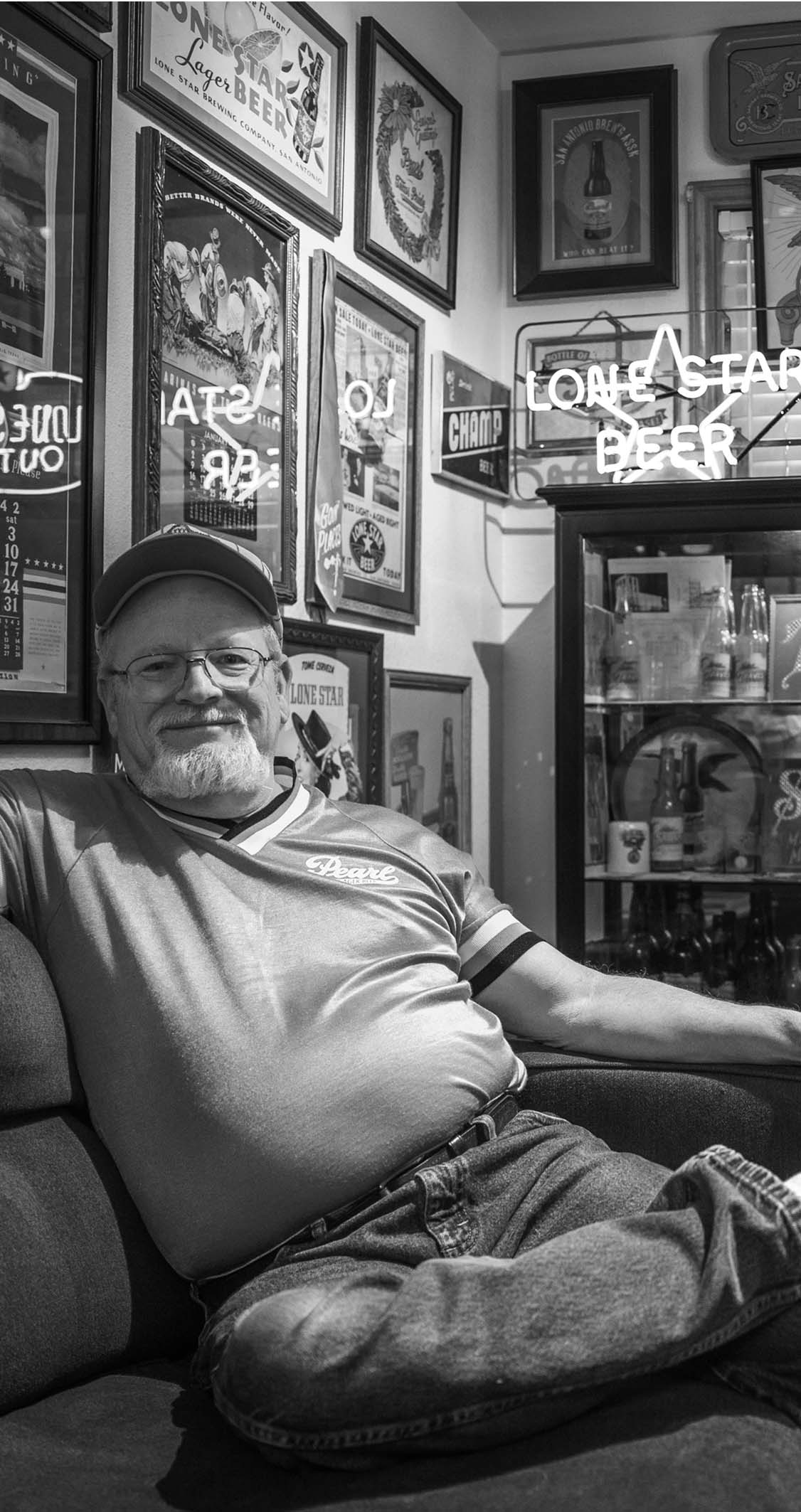
Where would we be without enthusiasts? If it weren’t for some folks’ unbridled obsession with a particular subject, much of our collective knowledge would fade away with each passing year.
For example, if the hobbyists and amateurs didn’t care about the history and impact of the Texas beer industry, who else would? There sure isn’t much money to be had, so all that’s left is the love of it.
And that brings us to Charlie Staats. He’s a fellow beer enthusiast like myself, but he loves the industry’s history and ephemera as much as I like the beer itself. Since the young age of 13, he’s been amassing one of the largest Texas beer memorabilia collections of all time, along with the encyclopedic knowledge that comes with many decades of treasure hunting. It's hard to overstate how massive it truly is, with signs, artifacts, advertising, and more dating well back to the 1800s—all spanning across his home and a sizable barn.
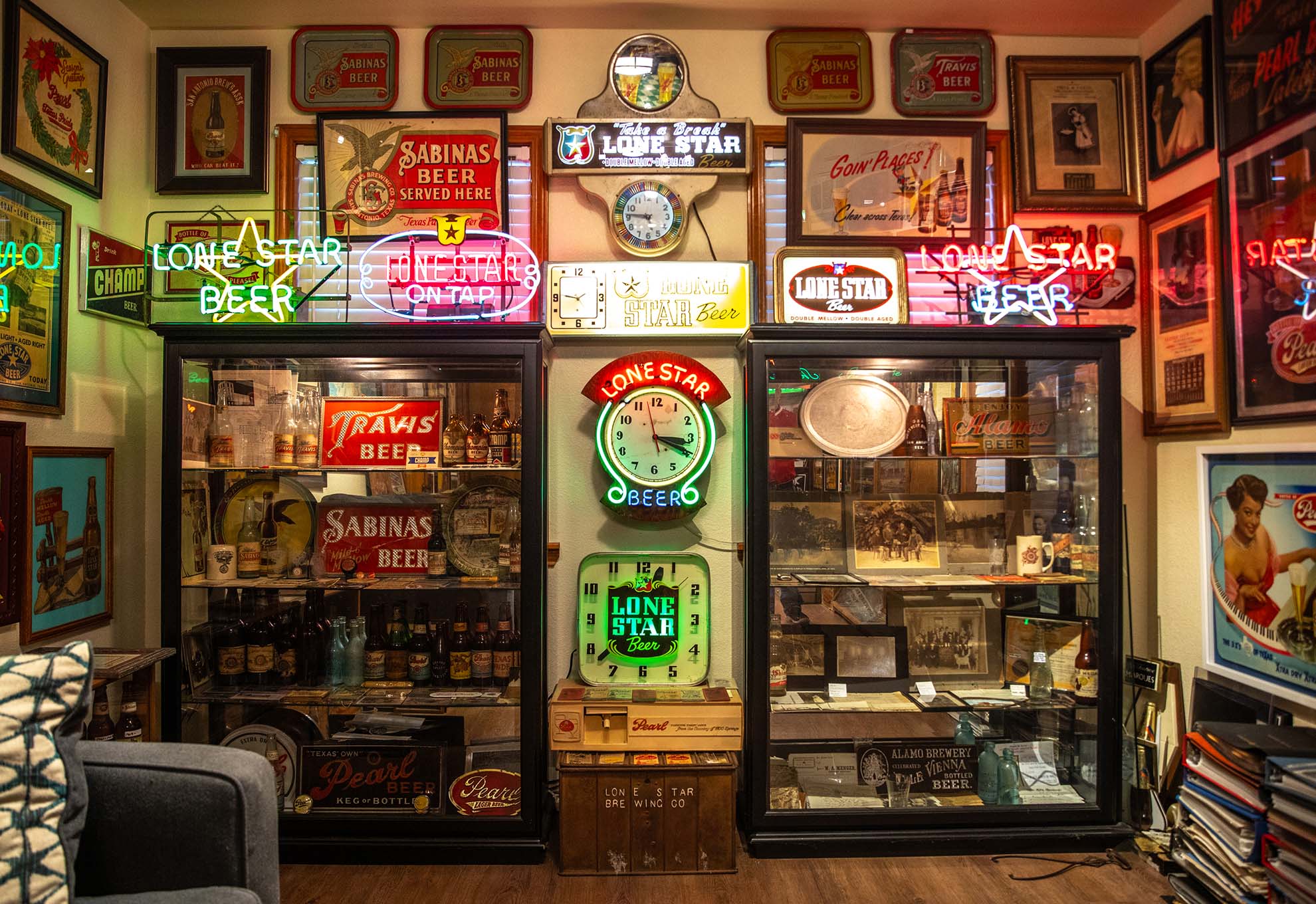
I’m fascinated by Charlie’s collection, but I’m also fascinated by the roots of beer in Texas because my team and I are directly linked to it with the upcoming opening of Otto’s Ice House in the The Pearl district of San Antonio. We’re stepping into a world that dates back more than 150 years in our great state, one that has had rippling impacts in just about every aspect of our culture, whether you like to knock back a cold one or not.
On a recent road trip around Central Texas, I had the privilege to swing by Charlie’s place in Seguin to explore his collection and talk shop. We traced his collecting days back to the source and discussed the nuanced and infinitely interesting history of Texas beer, along with the shifting definition of an ice house. Let’s crack this one open.
Here’s Charlie Staats, who I’m officially endorsing as the unofficial beer historian of Texas.
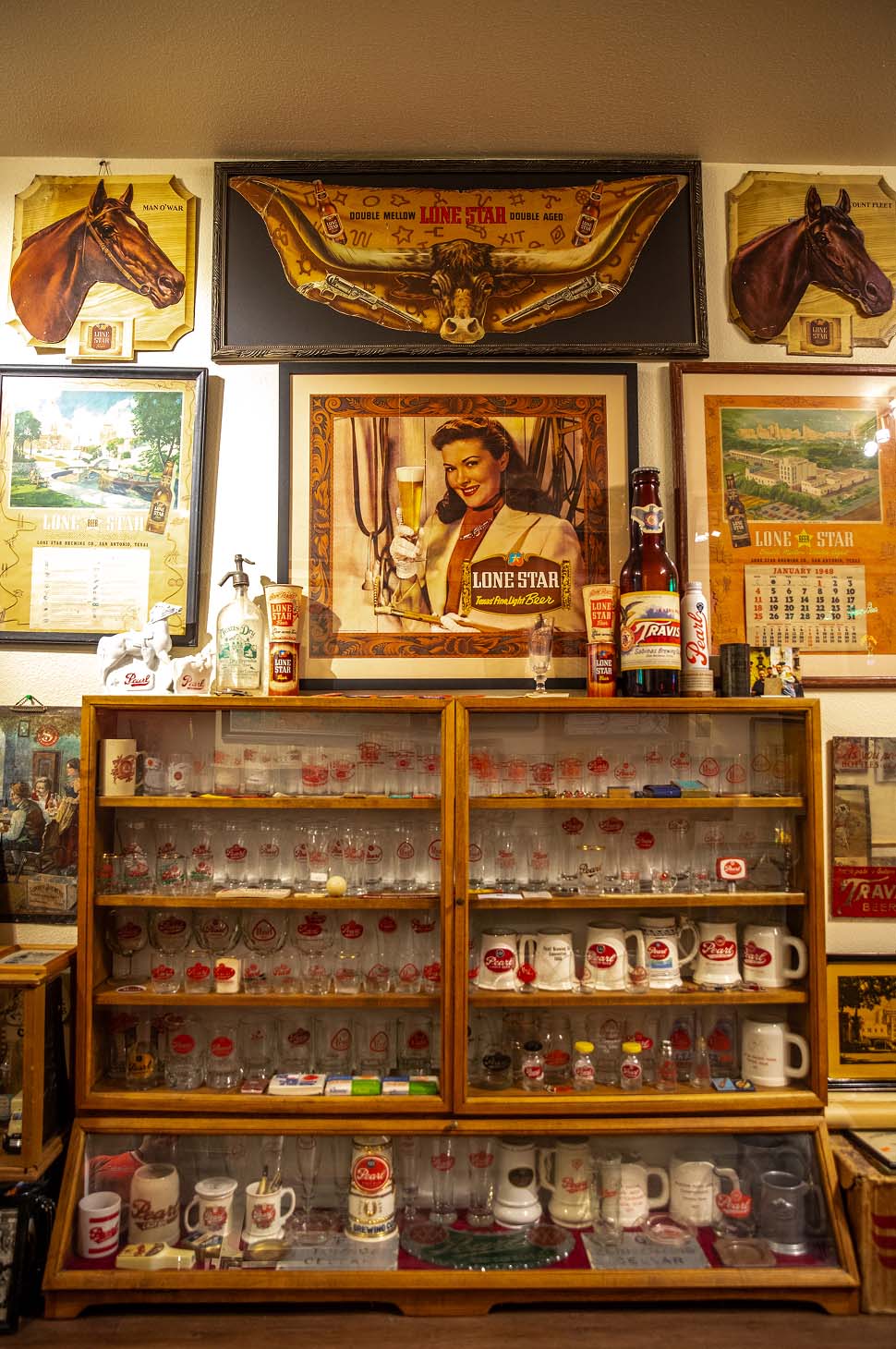

Levi Goode: I want to dive into historical stuff, but let's start with your collection because I could spend all day looking through this stuff. What sort of 13-year-old collects beer memorabilia?
Charlie Staats: I’m from San Antonio, but when I was about 10 we moved to Ohio for three years because my dad was military. Up there, the popular thing for kids to collect besides baseball cards and comic books was beer cans—you’d find some unusual beer cans walking to school every day. Back then, you could also take beer cans to school and trade ‘em with the kids. You could wear beer t-shirts at school—different times.
LG: Let’s bring it back.
CS: At least in the early to mid ‘70s, it was exploding. There were probably 200,000 kids nationwide collecting beer cans. That’s where I got my start. After my three-year stint in Ohio, I came back down to Texas only to find out I was the only kid in San Antonio who collected beer cans [laughs]. There were probably three or four adults.
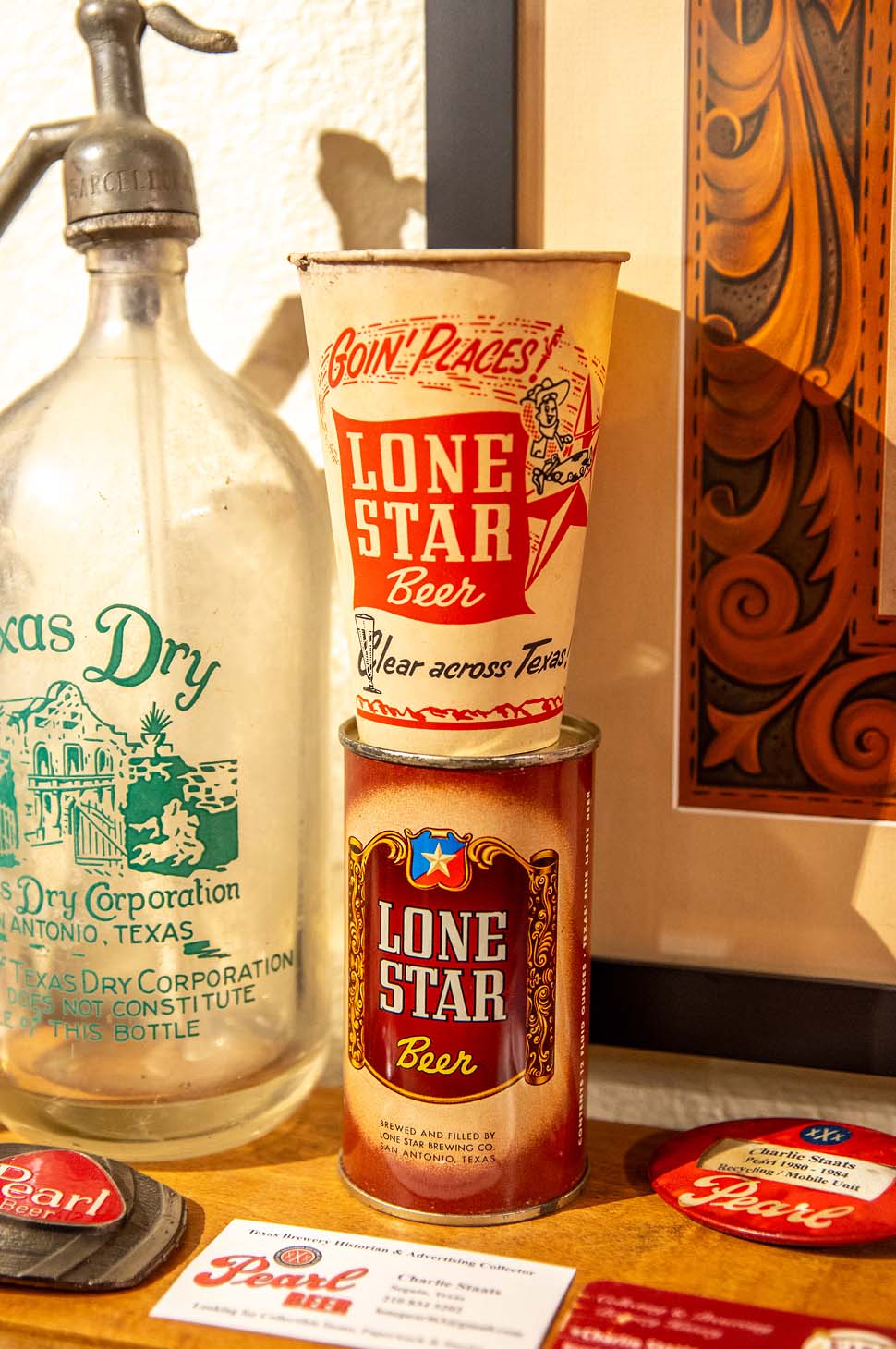

“Back then, you could also take beer cans to school and trade ‘em with the kids. You could wear beer t-shirts at school—different times.”

LG: So beer-can collecting was more of a Midwestern thing?
CS: There were so many more breweries—St. Louis, Chicago, Milwaukee. Whereas down here at the time, we had Pearl, Lone Star, and Shiner. The national brands came in, but their labels didn’t change much at all from the 1950s through the ’70s and even ’80s.
LG: So, fast-forward a bit, how did you continue down this path? I’m assuming most of those midwestern kids gave it up when they found out that girls existed.
CS: In high school, I ended up getting a job at Pearl Brewery in the recycling department. I’d dig through old cans and whatnot, but then I eventually switched over to collecting Pearl advertising and memorabilia. I worked at Pearl from around 1980 to 1984. The best part was that I got to talk to the old timers who were there at the time. I always enjoyed listening to their stories—and there were guys who had been at the brewery since the 1940s.
One of the great listening spots was the garage at the brewery. They actually had one of those old slide-back coolers full of Pearl beer, and you could go help yourself anytime of day. There were several spots around the brewery where workers could get a beer and just hang out. On any given day there’d be three or four old guys in there just talking about whatever.
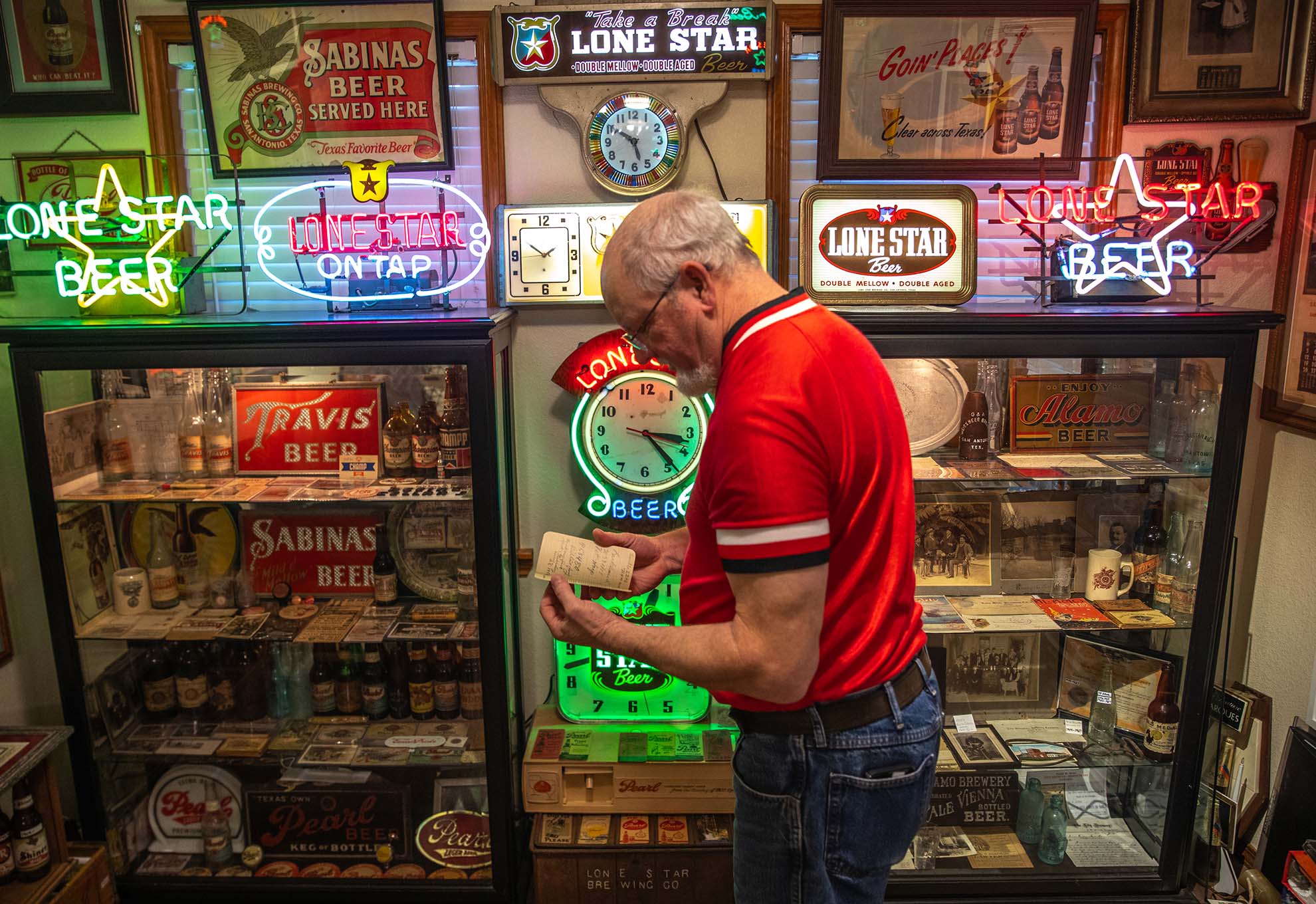
“When you dig up this stuff, you”re actually physically touching it, and you can’t help but think about how this item got here today, or how it was used 150 years ago. You end up putting yourself in that person’s place, which is a cool feeling.”
LG: What was it about beer memorabilia that spoke to you then, and still does to this day?
CS: It’s about learning about stuff, but it’s also about actually touching the history. When you dig up this stuff, you’re actually physically touching it, and you can’t help but think about how this item got here today, or how it was used 150 years ago. You end up putting yourself in that person’s place, which is a cool feeling.
LG: As a collector myself, I love that part—a direct connection to the past is a valuable thing. But, before we move onto the historical stuff, I want to know what your “holy grail” is as a collector.
CS: That’s a tough one. One of my “holy grails” was a portable beer draft system that would fit on a shelf in your refrigerator. Pearl bought a thousand of those units in 1965, and they had all kinds of problems with them. Essentially, they flopped. Pearl spent $100,000 for a thousand of them and those things are as rare as hens’ teeth. I’ve only seen two and I’ve got one of them.
So, I’ve already found one of my “holy grails,” but my current one is actually a good segue into our historical discussion. A fellow sent me this photo of an old saloon. [Charlie gets up and points to an old photo] This is a great example of what keeps it interesting for me. If you collect baseball cards, there’s a book that tells you every card’s ever been made. If you collect comic books, they’re numbered—if you’ve got number 10, there’s a nine and 11.
I’ve been doing this for 45 years and there’s still stuff that I’ve never seen before. They didn’t keep a record of every poster, and so this is one of the best saloon photos I’ve ever seen. If you look closely, you can see a beer sign that says Texas Pride, which was a brand for Pearl. It’s never been seen outside of old saloon photos. When those little clues pop up, it really keeps me interested and excited.
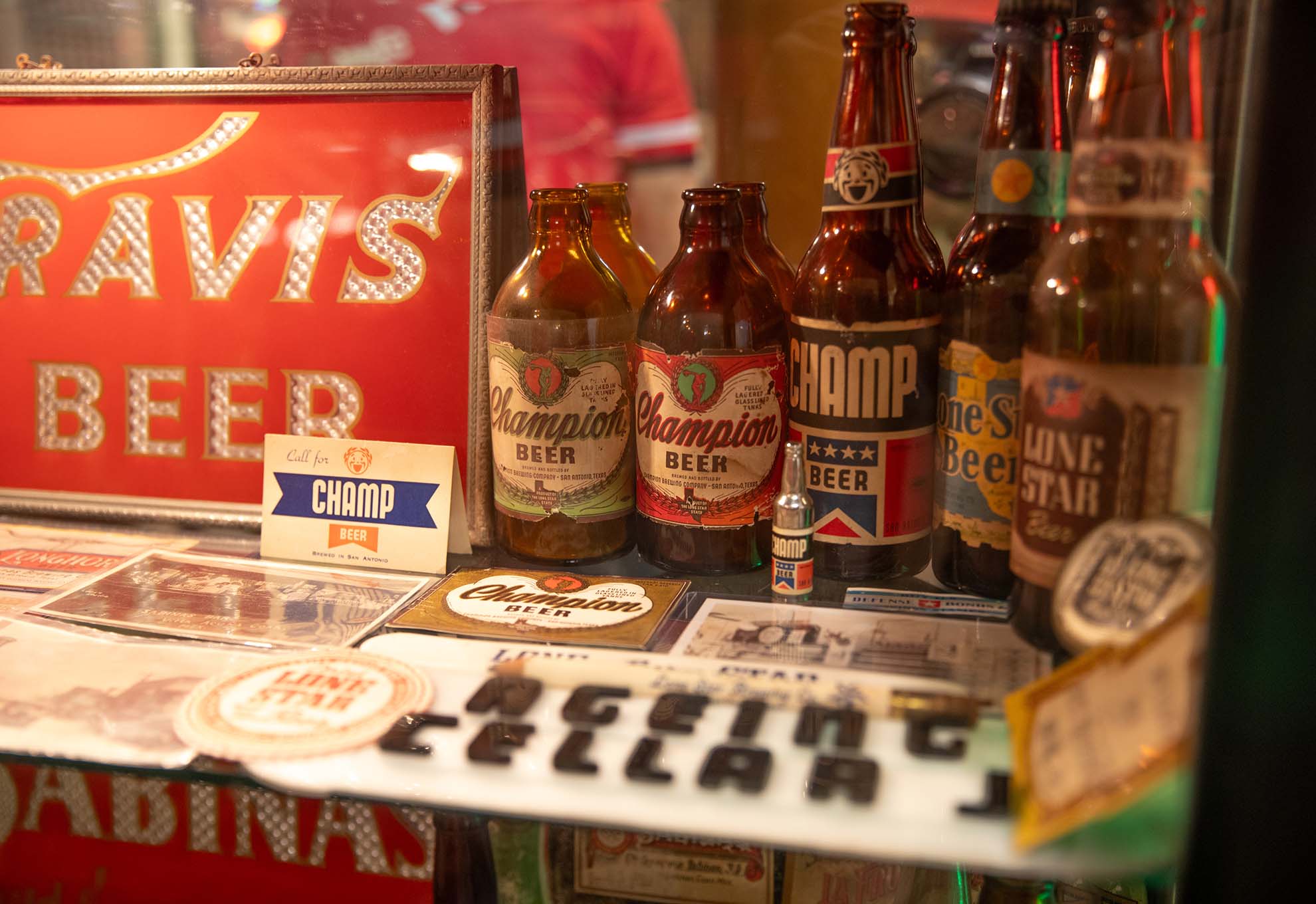
LG: What is it about Texas beer specifically that is so compelling to you?
CS: All those classic northern breweries were started by Germans, which is also true of Texas beers. But, the interesting thing to me is that the Texas brewers didn’t come from the north. They actually came up through Galveston or Indianola, which was a port town that was completely wiped out by two separate hurricanes in 1875 and 1886.
During the mid-1800s, Galveston and Indianola were major ports for German immigrants into the state. But here’s the thing—when they got here, there wasn’t shit to drink. The Native Americans and Mexicans were making their own type of liquors, but as we all know, Germans like their beer and even getting a bottle of beer would’ve been a pain. What I like to say is that it takes about three Germans to sit down and say, “I'm thirsty,” before somebody ends up making some beer. That’s exactly what happened. Texas was settled by thirsty Germans, and it didn’t happen in Dallas—they came through the Gulf of Mexico up to San Antonio and Central Texas.

“During the mid-1800s, Galveston and Indianola were major ports for German immigrants into the state. But here’s the thing—when they got here, there wasn’t shit to drink.”

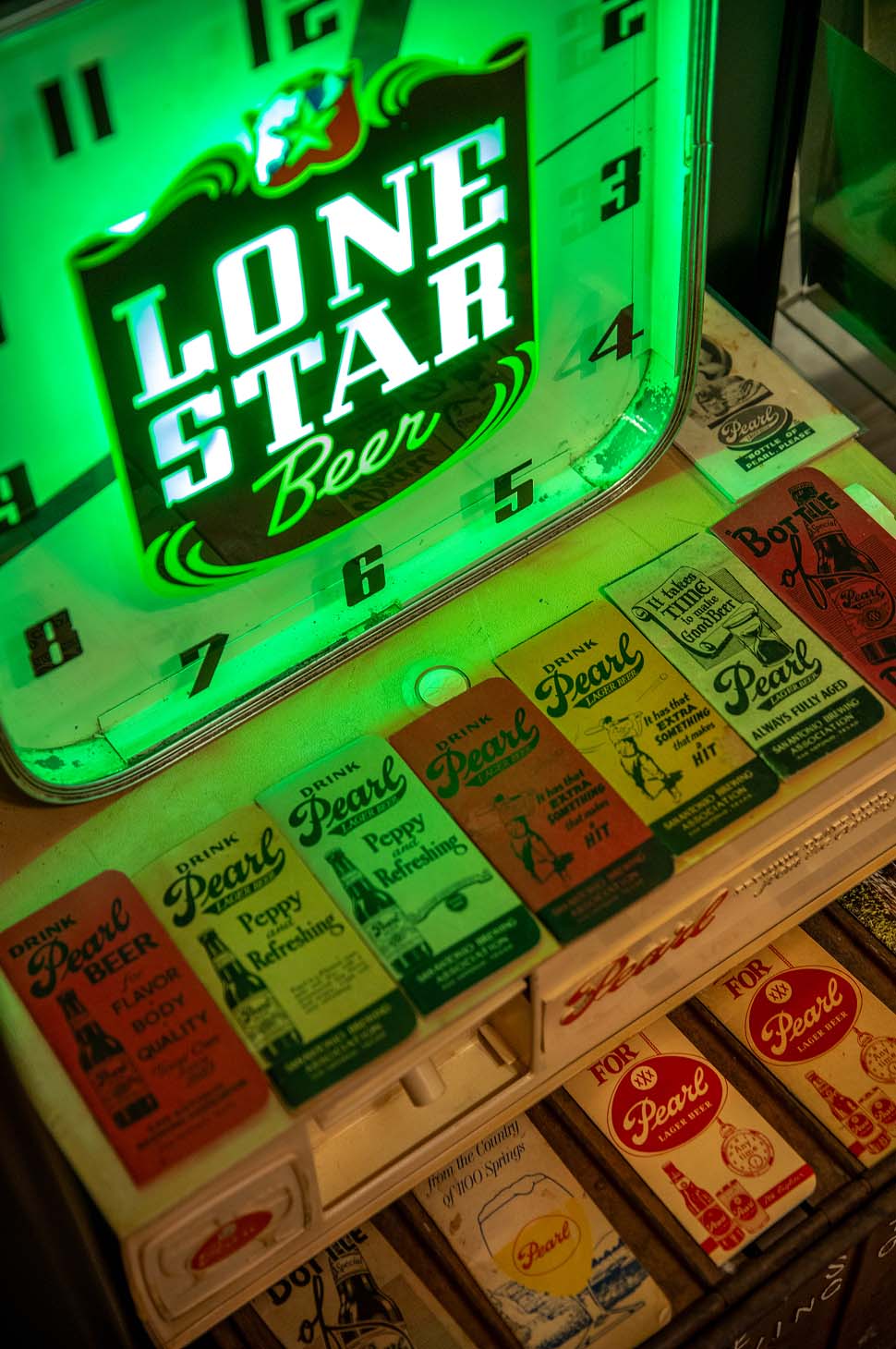
LG: On behalf of all beer drinkers, I’d like to personally thank the German immigrants for their contribution. In a way, they created what would eventually become an "ice house" as we see it today, right?
CS: Well, it’s not the shortest story [laughs]. In a nutshell, San Antonio became a hub. The small-town Germans were getting into the beer business, and some of the major players like Schlitz and Budweiser were beginning to bring beer in once the railroads came through. It’s interesting because even back then we had a “buy local” mentality when it came to Texas beer. The state really rallied around our own industry. And also much like today, the big companies loved to undercut the smaller Texas breweries.
Essentially, there was an ice war. Breweries like Budweiser actually set up ice depots along their shipping routes—and although we’re still far out, one could say this is a loose connection to what ice houses would become. Essentially, the big breweries could afford to give ice away for free with kegs, and that became the deciding factor for many Texas saloons—“you buy our keg, we give you the ice.” One of the results? The ice business was booming. So, around the 1880s or so, ice plants and ice factories began to pop up to keep up with the demand, which you could say is the early genesis of what the ice house would become.
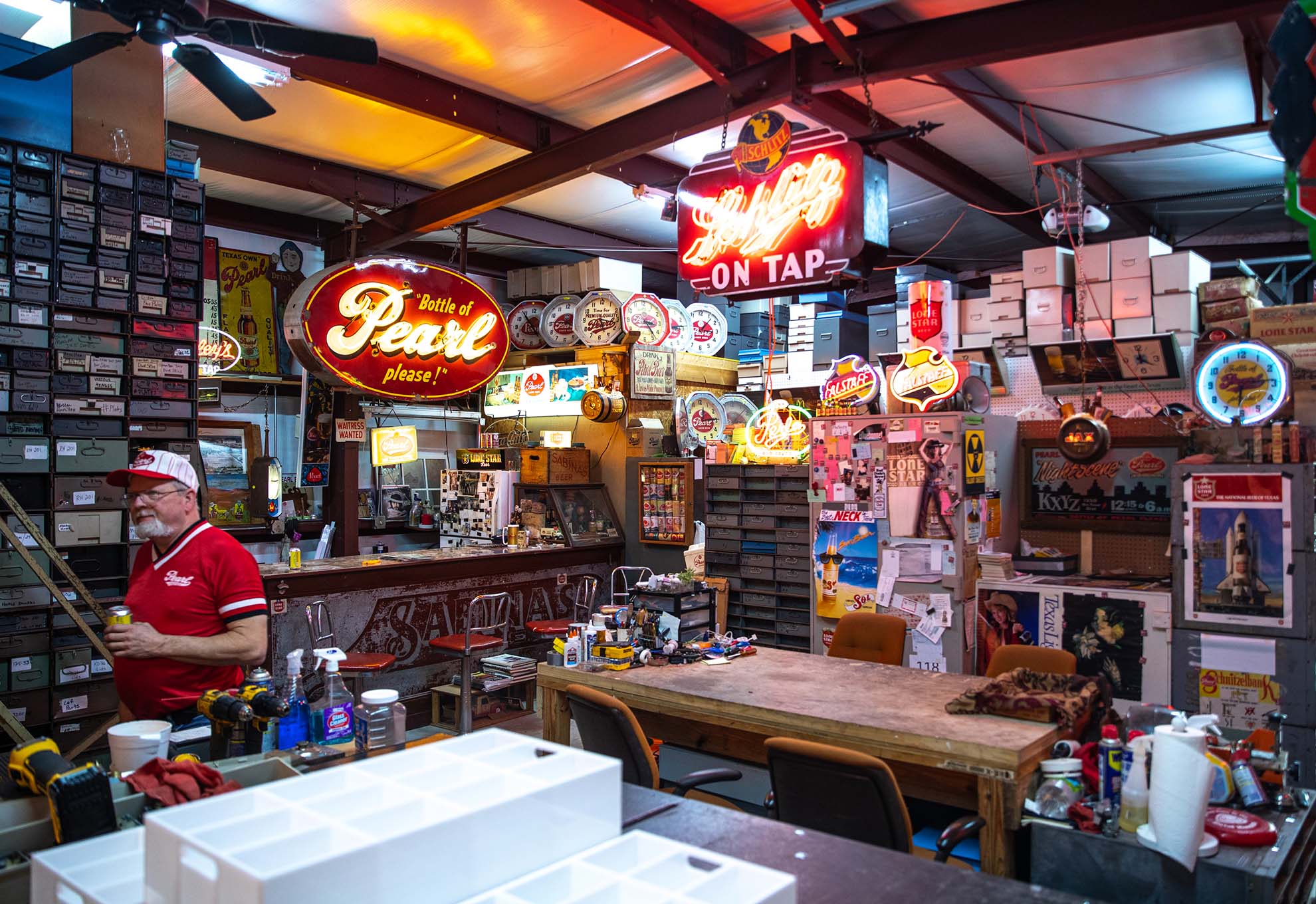
LG: What's your definition of an ice house?
CS: It helps to trace the roots a bit. Back in the 1880s and up to prohibition, the closest thing we had to an ice house would’ve been a German beer garden. That’s what later became known as an ice house, or at least that’s how I view it. Saloons didn’t have any outside seating. There were a few tables, but no bar stools. But the German beer gardens had more going on—bands playing, dances, and various events. It was regarded as more of a communal space than anything.
Unfortunately, most of those shut down with prohibition. When the ‘30s kicked back in, that’s when the ice house as we know it popped up, and it really had its heyday in the 1950s and 1960s. Originally, they were almost like a convenience store, or a grocery store, obviously meant to supply ice during the pre-refrigeration days or to people who couldn’t afford a refrigerator when they came around.
Lone Star actually had what they called “ice stations” during the 1920s until prohibition hit. Some of those ice stations then started offering food and some of those remained in San Antonio up until the late ‘70s.
LG: I feel like we’re getting closer to a definition [laughs].
CS: I guess that’s kind of the point; there really isn’t one. You could consider those ice stations an ice house, but those places never had outdoor seating to drink your beer. To me, the ice house is more about a feel. You have indoor seating sometimes, but there’s also plenty of fresh air. There are tables outside. If anything, the ice houses that we think of in the 1950s were really a throwback to what they considered icehouses in the early 1900s. Just like the rest of Texas’s beer history, it’s a winding road, which is why I love it.
LG: I think you’re spot-on. To me, an ice house is a feeling. It’s a name that evokes community, music, beer, and a few good friends. You know, the good stuff, which is what we’re looking to create at Otto’s.
CS: And as long as those places exist, there are sure to be a few thirsty Texans around and ready to crack a cold one.
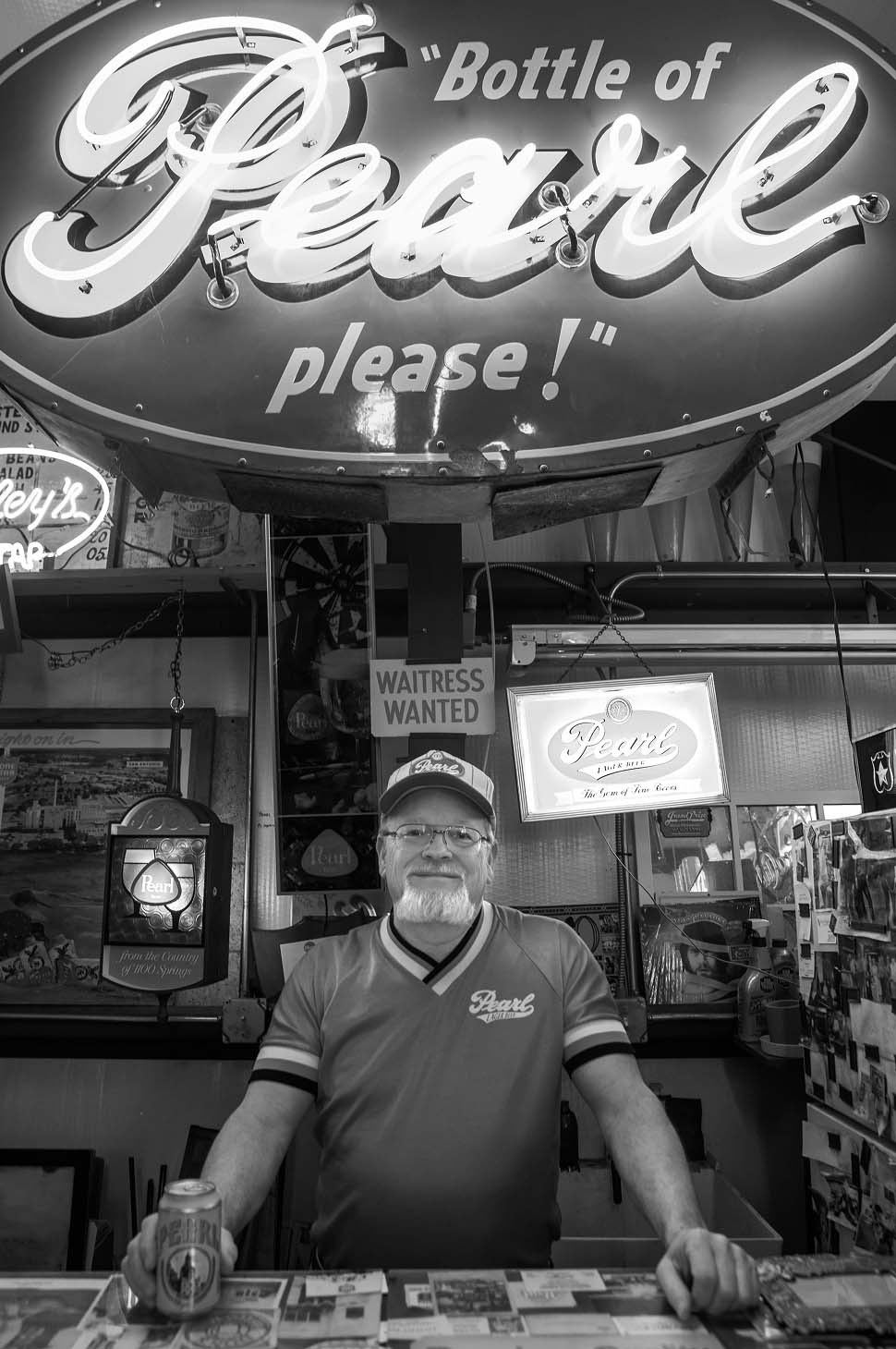

“If anything, the ice houses that we think of in the 1950s were really a throwback to what they considered icehouses in the early 1900s. Just like the rest of Texas’s beer history, it’s a winding road, which is why I love it.”

A big thanks to Charlie Staats for sharing his time and knowledge. Through his work at the Brewery Collectibles Club of America (BCCA) and the National Association of Breweriana Advertising (NABA), he and many other dedicated collectors are helping to keep the history of Texas’s beers alive.
Photography by Steve Schwartz.
